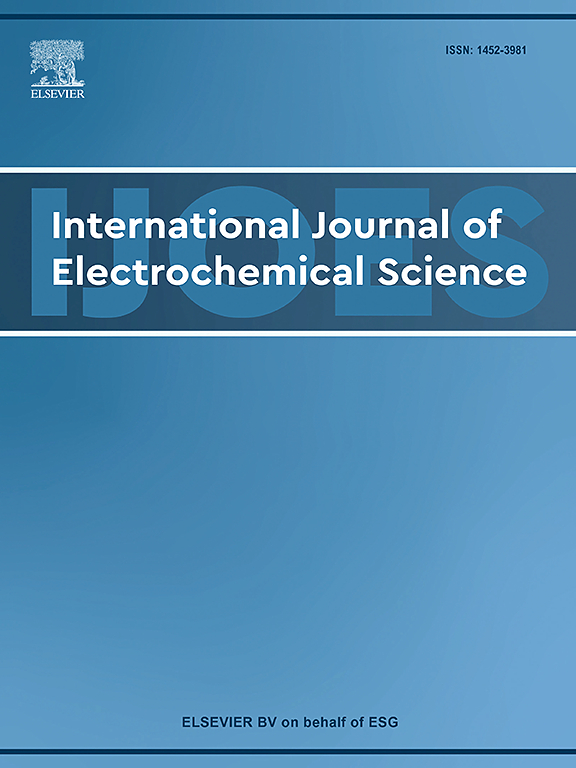Development of a porous 304L Stainless steel substrate enhanced with graphene and platinum for hydrogen mitigation in passive autocatalytic recombiners
IF 2.4
4区 化学
Q4 ELECTROCHEMISTRY
International Journal of Electrochemical Science
Pub Date : 2025-07-14
DOI:10.1016/j.ijoes.2025.101128
引用次数: 0
Abstract
The rapid expansion of the hydrogen economy poses significant safety challenges related to hydrogen handling across a wide range of applications. This study investigates the feasibility of using porous sintered 304 L stainless steel, coated with graphene and doped with platinum, as an advanced material for passive autocatalytic recombiners (PARs) to mitigate hydrogen release and improve operational safety. Detailed characterization using scanning electron microscopy (SEM), X-ray diffraction (XRD), and Raman spectroscopy confirmed the uniform deposition of graphene and platinum layers, as well as structural features such as spinel phase segregation. The low surface wettability, attributed to the armchair configuration of graphene edges, further enhances the material’s suitability for catalytic recombination reactions in humid environments. Hydrogen removal tests demonstrated that an optimized platinum doping level of 0.5 wt% combined with a controlled substrate porosity of 50 µm resulted in a maximum hydrogen conversion efficiency of 40 %. These results highlight the critical influence of doping concentration and pore architecture on catalytic performance and overall PAR efficiency. Overall, this research provides valuable insights into the development of high-performance, passive hydrogen recombination systems, offering a promising pathway to improve safety and sustainability in emerging hydrogen technologies and to advance the hydrogen industry.
用石墨烯和铂增强的多孔304L不锈钢衬底的开发,用于被动自催化重组器中的氢缓释
氢经济的快速发展对广泛应用中的氢处理提出了重大的安全挑战。本研究探讨了采用多孔烧结304 L不锈钢,涂覆石墨烯并掺杂铂,作为被动自催化重组器(par)的先进材料,以减轻氢释放并提高操作安全性的可行性。利用扫描电镜(SEM)、x射线衍射(XRD)和拉曼光谱进行详细表征,证实了石墨烯和铂层的均匀沉积,以及尖晶石相偏析等结构特征。由于石墨烯边缘的扶手椅结构,其表面润湿性较低,进一步增强了材料在潮湿环境中催化重组反应的适用性。除氢测试表明,优化的铂掺杂水平为0.5 wt%,并控制衬底孔隙率为50 µm,可获得最大的氢转化效率为40 %。这些结果突出了掺杂浓度和孔结构对催化性能和PAR总体效率的关键影响。总的来说,这项研究为高性能、被动氢复合系统的开发提供了有价值的见解,为提高新兴氢技术的安全性和可持续性以及推动氢工业的发展提供了一条有希望的途径。
本文章由计算机程序翻译,如有差异,请以英文原文为准。
求助全文
约1分钟内获得全文
求助全文
来源期刊
CiteScore
3.00
自引率
20.00%
发文量
714
审稿时长
2.6 months
期刊介绍:
International Journal of Electrochemical Science is a peer-reviewed, open access journal that publishes original research articles, short communications as well as review articles in all areas of electrochemistry: Scope - Theoretical and Computational Electrochemistry - Processes on Electrodes - Electroanalytical Chemistry and Sensor Science - Corrosion - Electrochemical Energy Conversion and Storage - Electrochemical Engineering - Coatings - Electrochemical Synthesis - Bioelectrochemistry - Molecular Electrochemistry

 求助内容:
求助内容: 应助结果提醒方式:
应助结果提醒方式:


